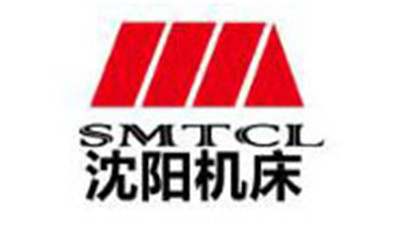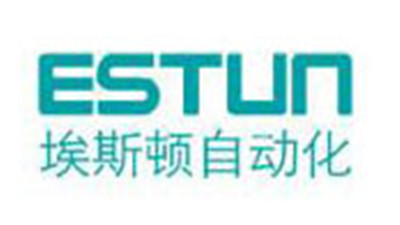Innovative Solutions for Optimal 33kv Transformer Performance
Table of Contents
- Emerging Technologies in Transformer Design for Enhanced Efficiency
- Key Performance Indicators for 33kV Transformers: Monitoring and Optimization
- Sustainable Practices in Transformer Maintenance for Longevity and Reliability
- Integrating Smart Grid Solutions for Improved Transformer Management
- Innovative Materials and Their Impact on Transformer Performance
- Future Trends in 33kV Transformer Development: Challenges and Opportunities
- FAQS
- Related Posts
In the fast-changing world of electrical engineering, making sure 33kV transformers perform their best is a real key when it comes to keeping power systems efficient, reliable, and long-lasting. Here at Dezhou Xinping Electronics Co., Ltd., we’re a high-tech company that’s been around since 2001. We’re all about coming up with innovative solutions that fit the needs of today’s electrical infrastructure. With years of experience in building precise electronic transformers, we’ve really positioned ourselves at the cutting edge of this field.

In this blog, we’re going to share some practical tips and the latest techniques to boost the performance of 33kV transformers—aiming to not just meet, but beat industry standards. Stick with us as we explore how these new approaches could change the future of power transmission and distribution for the better.
Emerging Technologies in Transformer Design for Enhanced Efficiency
The world of transformer design is changing pretty fast these days. It's all about making things more efficient and eco-friendly, you know? New tech is really leading the charge, bringing in fresh solutions that boost how well 33kV transformers perform. For instance, one of the cool advancements is using fancy materials like amorphous steel in the core. This stuff helps cut down energy losses caused by hysteresis and eddy currents, so transformers not only run smoother but also sip less power. That’s great for the environment, right?

And it gets even more interesting with the rise of smart grid tech. Thanks to IoT gadgets and clever data analysis, operators can keep an eye on transformer performance in real time. This means they can predict maintenance needs before things break, which cuts down on unexpected outages. Basically, these new tools make power systems more reliable and efficient. Looking at all these innovations, it’s pretty clear that the future’s headed towards smarter, greener energy setups that can handle today’s growing power demands without breaking a sweat.
Key Performance Indicators for 33kV Transformers: Monitoring and Optimization
When it comes to 33kV transformers, their performance really plays a huge role in keeping our electrical distribution smooth and reliable. To make sure they keep running at their best, it’s pretty important to keep an eye on key performance indicators (KPIs) regularly. Industry folks say that doing regular thermal scans can spot hotspots in transformer parts early on, which can help cut down maintenance costs by up to 30%.
Things like watching load capacity, voltage adjustments, and insulation resistance aren’t just about keeping things running—they actually help your transformer last longer and run more efficiently.
A good tip? Schedule those thermal inspections about twice a year, so you catch problems before they turn into bigger issues. And if you’re into data, using advanced analytics tools to track how your transformer performs over time can really make a difference. That way, you can jump in quickly if something’s off.
Another critical KPI to watch is the total harmonic distortion (THD). It should stay below 5% to keep everything running smoothly. If it gets too high, it could cause your transformer to overheat or waste energy. In fact, studies show that managing THD properly can boost energy efficiency by around 10-15%.
My advice? Consider using power quality analyzers regularly to check on THD, and maybe invest in active filters. They’re pretty effective at reducing harmonic distortion, which means your transformer stays healthier and more efficient in the long run.

Sustainable Practices in Transformer Maintenance for Longevity and Reliability
When it comes to making 33kV transformers last longer and run more reliably, these days, there's a real focus on sustainable maintenance practices. Honestly, traditional methods often end up causing more environmental harm and using up more resources than we'd like. The good news is, by switching to greener approaches, not only can companies extend the life of their transformers, but they also get to play their part in the bigger picture of global sustainability goals. Techniques like predictive maintenance, which leverage modern sensors and diagnostic tools, are a game-changer. They let us keep a close eye on transformer health in real-time, so issues can be caught early — preventing big failures before they even happen.
And it doesn’t stop there. Using eco-friendly materials during maintenance—stuff like biodegradable lubricants or environmentally safe insulating fluids—not only cuts down on carbon footprints but also keeps things running smoothly. Plus, making sure the maintenance crews are well-trained in these sustainable techniques is super important. It’s all about staying up-to-date and being ready to support greener practices. Bottom line? When sustainability is woven into every step of transformer maintenance, facilities can hit that sweet spot between keeping things efficient and being kind to our planet. That way, we’re not just ensuring reliable power today, but also taking care of resources for the future.
Innovative Solutions for Optimal 33kv Transformer Performance
| Maintenance Practice | Frequency | Duration (hours) | Cost ($) | Impact on Performance (%) |
|---|---|---|---|---|
| Thermal Imaging | Annually | 2 | 300 | 15 |
| Oil Analysis | Semi-Annually | 1 | 250 | 10 |
| Electrical Testing | Quarterly | 3 | 400 | 20 |
| Cleaning and Inspections | Monthly | 1 | 150 | 5 |
| Bushing Replacement | Every 5 Years | 4 | 1200 | 25 |
Integrating Smart Grid Solutions for Improved Transformer Management
In today’s world of modern energy management, integrating smart grid tech has really become a game-changer—especially when it comes to 33kV transformers. At Dezhou Xinping Electronics, founded way back in 2001 and recognized as a high-tech enterprise nationwide, we’re proud to be leading the charge with innovative solutions that make transformer management smarter and easier. Thanks to advanced monitoring systems and IoT connectivity, our transformers can now send real-time data on how they’re performing. That means utility companies can make better, more informed decisions about maintenance and upgrades without waiting for problems to actually happen.
And here’s the cool part—these smart grid solutions also bring predictive analytics into play. Essentially, they help us spot potential issues early on, before they turn into major failures. It’s a proactive way of keeping things running smoothly, reducing downtime, and cutting down maintenance costs.
As a top manufacturer of precision electronic transformers, we’re really dedicated to leveraging these cutting-edge methods. Our goal? To not just meet today’s power demands, but to also help shape a more sustainable and efficient energy future for everyone.
Innovative Materials and Their Impact on Transformer Performance
When it comes to 33kV transformers, the materials used in their construction really make a huge difference in how well they perform and how reliable they are. Lately, there have been some pretty cool innovations—like new insulating composites and high-conductivity metals—that actually boost their efficiency and extend their lifespan. For example, incorporating nanomaterials into the insulation can cut down on energy losses and help with heat management, so the transformer runs cooler and stays healthier longer without wearing out too quickly.
A little tip: when you're evaluating how a transformer performs, don’t forget to think about the thermal properties of the insulation. Materials that better conduct heat can help dissipate it more effectively, which basically means the transformer can run smoother and more efficiently—super important for those big high-voltage setups.
Plus, there's been some game-changing work with core materials too. Amorphous steel, for instance, has really shaken things up by drastically lowering hysteresis losses. This means the transformer runs more efficiently and costs less to operate—something that's especially crucial for industrial sites that gobble up a lot of energy. Using these cutting-edge materials not only boosts the performance but also helps out with sustainability goals by reducing wasted energy.
And here's a little pro tip: keeping up with maintenance and monitoring can really pay off. It helps you track how these materials are holding up in real-world conditions, so you can upgrade or replace parts just in time—staying aligned with the latest tech breakthroughs in transformers.
Innovative Solutions for Optimal 33kV Transformer Performance
This chart illustrates the impact of various innovative materials on the performance efficiency of 33kV transformers. The data shows performance metrics including thermal conductivity, dielectric strength, and operational lifespan.
Future Trends in 33kV Transformer Development: Challenges and Opportunities
Looking ahead, the future of 33kV transformers is really coming down to a mix of innovation and doing things more sustainably. It’s a pretty exciting time, but at the same time, there are definitely some hurdles to jump over. As more industries need dependable and efficient power distribution, folks are increasingly turning to cutting-edge tech to boost how well these transformers perform. Take Dezhou Xinping Electronics Co., Ltd., for example—since starting back in 2001, they’ve been leading the way in this field, especially when it comes to crafting electronic transformers with precision and care.
One big trend right now is adding smart tech into transformer systems. Thanks to IoT solutions, these transformers can keep an eye on themselves in real time—spotting potential issues before they actually happen and even helping schedule maintenance better. That means they not only run more smoothly but actually last longer too.
**Some tips:**
1. Really jump into digitalization—think about investing in smart sensors and analyzing data like a pro to keep your transformers in top shape.
2. Focus on energy efficiency, not just to meet rules, but also to push the boundaries of what your transformers can do.
3. Work with tech partners to come up with innovative designs that keep up with the ever-changing energy scene—so your products stay ahead of the game.

FAQS
: Advanced materials like amorphous steel are integrated into core construction to reduce energy losses from hysteresis and eddy currents, leading to more efficient transformers.
Smart grid technologies utilize IoT devices and analytics for real-time monitoring of transformer performance, enabling predictive maintenance and reducing downtime.
Predictive maintenance involves using modern diagnostic tools and sensors to monitor transformer health in real-time, allowing for timely interventions to prevent major failures.
Sustainable practices include using biodegradable lubricants and eco-friendly insulating fluids, which help minimize the environmental impact while ensuring optimal performance.
Regular training ensures that maintenance teams are equipped with the latest knowledge and techniques to implement sustainable practices effectively, supporting a greener transformation.
Future trends include the integration of smart technologies for real-time monitoring and failure prediction, enhancing operational efficiency and extending equipment lifespan.
Industries can embrace digitalization by investing in smart sensors and data analytics, focusing on energy efficiency, and collaborating with technology partners to innovate designs.
Energy efficiency is crucial for meeting regulatory requirements and enhancing transformer capabilities, making transformers more competitive in the market.
The future of transformer development faces challenges such as the need for innovation and sustainability to meet growing demands for reliable and efficient power distribution.
Predictive maintenance can significantly extend the lifespan of transformers by identifying and addressing issues before they lead to failure, thus improving reliability.
Blog Tags:




















